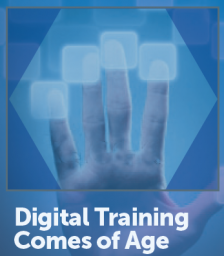Journalism training and the digital revolution

What a difference a decade makes. A new survey of journalists trained in Knight Foundation-funded programs makes it abundantly clear that the digital tsunami that upended the news industry is remaking the journalism training landscape as well.
The survey of 660 trainees or fellows in Knight-funded programs is part of a report. “Digital Training Comes of Age,” which I co-authored with Eric Newton, senior advisor to the president of the Knight Foundation.
We sought to gain insight into the state of professional development for journalists through the survey and by looking at emerging training practices as well as the impact of training.
We wondered what skills journalists thought they needed, whether e-learning might provide some solutions, and whether news organizations were providing training to help newsrooms meet today’s digital challenges.
The report is the fourth in-depth look at journalism training in the past decade by Knight Foundation, which has invested more than $150 million in journalism education during the last 10 years. It focuses on the work of nine Knight-funded training or fellowship programs, including Knight Digital Media Center at USC Annenberg.
Key changes:
Demand side
Fully 85 percent of the journalists surveyed this year said they would benefit greatly or very greatly from more staff development. Ten years ago, when Knight surveyed journalists for a study called “Newsroom Training: Where’s the Investment,” that number was 54 percent.
Digital-tools training is the most sought after training. The journalists saw the greatest benefit in training in multimedia, data analysis and technology. Demand for these skills has soared compared to another Knight survey in 2006. This year, 60-70 percent of journalists want one or more of these skills; five years ago, 40 percent wanted more digital training.
Training remains a top source of job dissatisfaction - 24 percent said they were dissatisfied with training opportunities and only four in 10 gave their news organizations good grades for providing professional development.
(Not surprisingly, dissatisfaction over job security doubled, from 11 percent to almost 21 percent, another reflection of the crisis in the news industry.)
Supply side
Online distance learning, or e-learning, is growing in popularity. Seven in 10 journalists who participated in online learning said it was as good or better than in-person training. Those ratings were drive by strong approval from international journalists - eight in 10 liked e-learning. In the United States, only about a third of the journalists said it was as good or better.
Key factors in this shift? Training organizations are producing better e-learning today and most people, including journalists, are simply more comfortable doing things digitally and virtually.
Training organizations are adapting. Notably, the online News University has some 215,000 registered users and about 275 online classes. The Knight Center for Journalism in the Americas trained 2,500 Latin American and Caribbean journalists online in 2010 and 2011.
A recent report from the Pew Research Center reinforces the idea that academia is a next frontier for e-learning. The survey of technology stakeholders predicted that by 2020 opportunity, economic concerns and student and parent demands would cause university-level education would adopt new methods of distance teaching and certification, driven by opportunity, economic concerns and student and parent demands.
A “do-over moment”?
In our report, we ask whether growth in acceptance of e-learning suggests a “do-over moment’’ for news industry training. News organizations have been notoriously stingy when it comes to funding training - a situation that cannot have improved recently at most organizations.
But e-learning offers a lower cost option for training in many topics and skills. Will news companies take advantage of that?
It appears that some are, but most are not. Fewer than four in 10 journalists in the new survey gave their newsrooms good marks for providing training and professional development. The grades have declined steadily in Knight surveys of the past decade.
Time and time again, we’ve seen the impact of training - raising skill levels and helping organizations and teams become more adaptive and innovative.
As we note in “Digital Training Comes of Age,” participants reported a wide range of impacts from their training:
“Some deepened their reporting on important topics and drove change and reform. Others built or revamped websites or started new sites that fill gaps in community news. Some developed new understandings of the digital media environment and used them to shape the strategy of their news organization. Others developed multimedia skills that enriched their reporting or learned social media techniques that help them deepen their connections to communities.”
The report makes clear that training works and that it helps journalists and journalism organizations find their footing and move forward across a dynamic news landscape.
Training won’t answer all the woes of the news industry. But it is clear that news organizations that are not training are trying to adapt with at least one hand tied behind their backs.
The Community News Leadership 3.0 blog is made possible by a grant to USC Annenberg from the John S. and James L. Knight Foundation.



